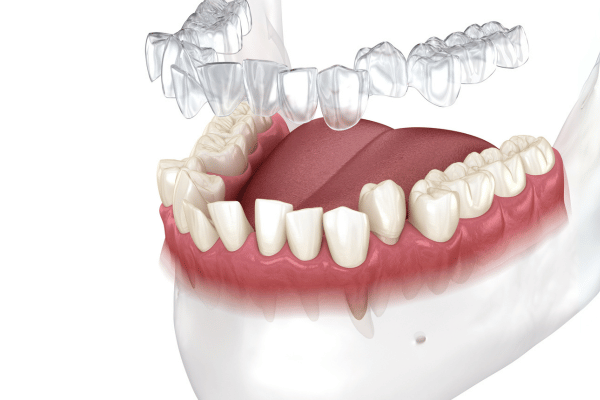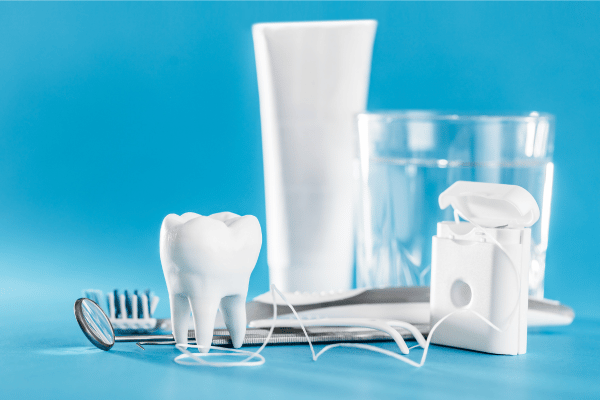
Table of contents
Achieving a straight smile after completing your clear aligner treatment is a huge success for patients who desire to have a straight smile. Even though your orthodontic treatment might be over, maintaining the ideal shape of your teeth requires attention and care. Without proper aftercare, teeth have the tendency to shift back to their original positions. This blog provides essential tips for preserving the results of your aligner treatment, ensuring your smile remains in its ideal shape for years to come.
Understanding Post-Treatment Teeth Movement

When the clear aligners are removed, it’s common for the teeth to attempt to return to their original positions. This occurs due to several natural and biological reasons:
Memory of Teeth
Teeth have a 'biological memory' that can cause them to shift back to their starting points after the aligner treatment is completed.
Adjustment Period
Just as your body needs time to adapt to new situations, the gums and bones surrounding your teeth need time to settle into their new positions. This adjustment period is important for the long-term stability of your teeth alignment.
Natural Aging Process
The natural aging process can also influence teeth to shift slightly over time. This is a normal part of aging, akin to changes in skin and hair.
With a clear understanding of why teeth may move post-treatment, it is very important to take proactive steps to prevent this.
Best Strategies to Prevent Teeth Shifting
After the completion of clear aligner treatment, adopting certain practices can significantly reduce the likelihood of your teeth shifting.
These strategies are not only effective but can be easily incorporated into your daily routine.
Wearing Retainers as Directed
One of the most critical steps in maintaining your new smile is the consistent use of teeth retainers. After your aligners have done their job, retainers help to keep your teeth in place while your gums and bones adapt to their new positions. Your orthodontist will provide specific instructions on how often and how long to wear your retainer.
Key Reasons to Wear Your Retainer as Directed
- Prevents Teeth from Shifting: The primary function of a retainer is to maintain the alignment of your teeth post-treatment. Wearing it as directed counteracts the natural tendency of teeth to return to their original positions.
- Ensures Long-lasting Results: By preventing unwanted teeth movement, retainers help ensure that the investment in your smile is preserved long-term.
- Supports Gum and Bone Adaptation: After orthodontic treatment, your gums and the bones in your jaw need time to solidify around your teeth's new positions. Retainers play a crucial role during this adaptation phase.
- Customized for Your Mouth: Retainers are custom-made to fit your mouth perfectly, providing personalized support to keep your teeth aligned.
- Minimizes the Need for Further Orthodontic Work: Consistent use of your retainer can prevent the need for additional orthodontic treatments in the future, saving you time, discomfort, and expense.
Maintaining Regular Dental Check-ups
Regular visits to your dentist or orthodontist are essential for keeping your teeth aligned. These professionals can monitor the stability of your teeth and the health of your gums and jaw. Regular check-ups allow for early detection and intervention if your teeth do start to shift, ensuring any minor issues can be addressed before they become more significant.
Good Oral Hygiene Practices

Maintaining excellent oral hygiene plays a crucial role in the long-term stability of your teeth alignment. You must try brushing twice a day, flossing daily, and using mouthwash to keep your gums healthy and strong. Healthy gums provide a stable environment for your teeth, reducing the risk of shifting.
What to Do If You Notice Teeth Shifting
Despite your best efforts, you might notice that there is some minor teeth movement over time. It’s important not to panic and there are steps you can take to address this issue effectively.
Immediate Follow-up
In case you observe any shifting, the first step is to consult your orthodontist or your retainer provider. They can assess the extent of the movement and recommend the best course of action. This might include adjusting your retainer wear schedule or possibly fitting you for a new retainer.
Minor Orthodontic Treatments
In some cases, minor orthodontic interventions may be necessary to realign your teeth. Your orthodontist can discuss options that might include a brief period of wearing aligners again or other corrective measures tailored to your specific needs.
Diet and Nutrition Considerations
Your diet plays a huge role in maintaining the alignment of your teeth after clear aligner treatment. Paying attention to what you eat and how you eat can help support the stability of your teeth and overall oral health.
Avoiding Hard and Sticky Foods
Hard and sticky foods can exert unnecessary pressure on your teeth, potentially causing them to shift. Additionally, these foods can damage your retainer or orthodontic appliances. It’s best to avoid or consume these foods cautiously if you’re concerned about maintaining your alignment.
Final Thoughts
In conclusion, the journey to a straight smile doesn’t end when your clear aligner treatment does. It continues with a commitment to good oral hygiene, regular dental care, and mindful living. By taking these steps, you can enjoy the results of your treatment for years to come, ensuring that your smile remains as beautiful as the day your aligners came off.
FAQs
1. How long do I need to wear my retainer after clear aligner treatment?
The duration for wearing a retainer varies depending on individual cases. Initially, you may need to wear it full-time for a few months, gradually transitioning to only at night. Your orthodontist will provide a personalized schedule based on your specific needs.
2. Can I stop wearing my retainer if my teeth stay straight?
Even if your teeth appear to remain straight, discontinuing retainer use can lead to gradual shifting over time. It's crucial to follow your orthodontist's guidance on long-term retainer use to maintain your results.
3. How do I clean my retainer?
Retainers should be cleaned regularly using a soft-bristled toothbrush and non-abrasive toothpaste or a cleaner recommended by your orthodontist. Avoid hot water, as it can warp the retainer.
4. What should I do if my retainer feels tight or uncomfortable?
If your retainer feels unusually tight or causes discomfort, it may indicate that your teeth have shifted slightly. Contact your orthodontist for an evaluation; you may need an adjustment or a new retainer.
